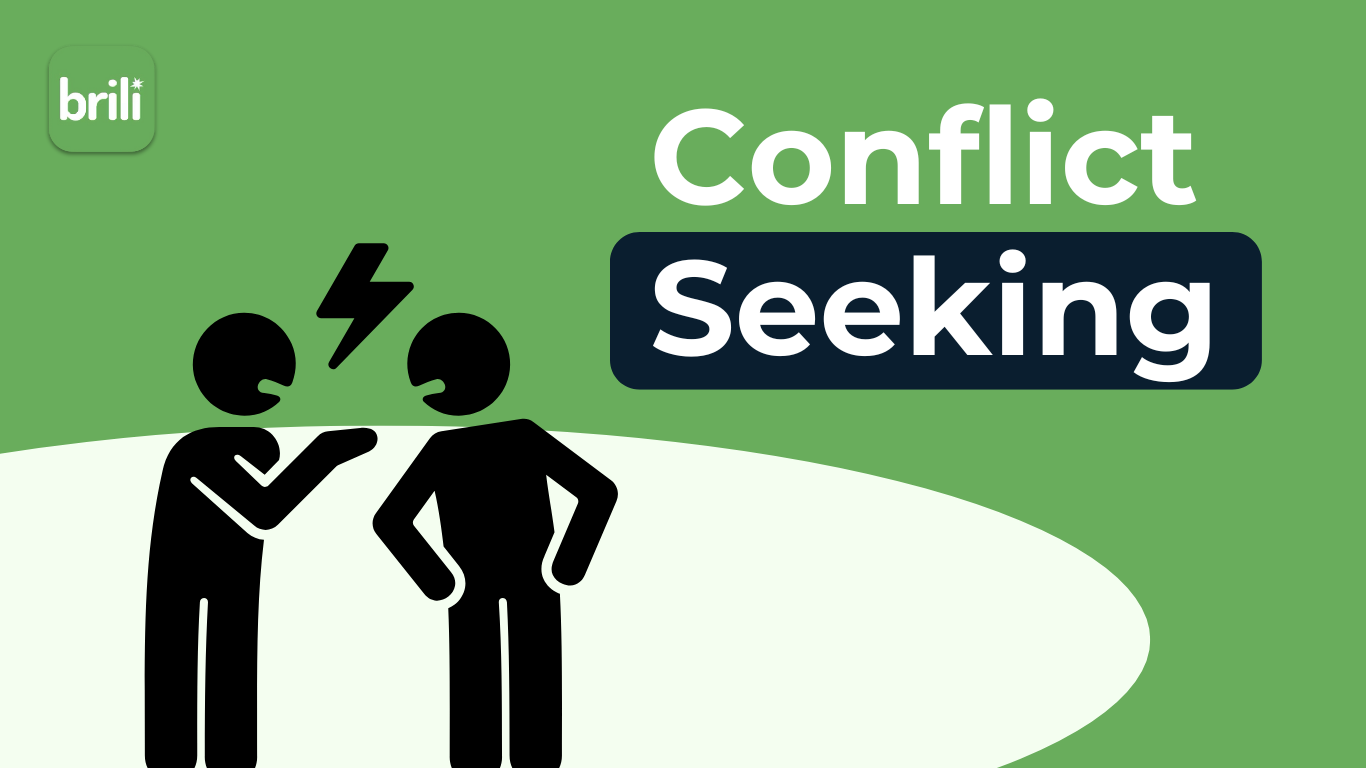Conflicts are part of the daily experience for many ADHDers. Interestingly enough, reasons for the drama are often misinterpreted.
While impulsivity, rejection sensitivity (RSD), and emotional dysregulation are often considered as the underlying cause, conflict-seeking behavior stems from a different source: the brain's craving for dopamine.
Here, we'll delve into the science behind this behavior, how it differs from other ADHD-related traits, and ways it manifests in daily life.
The Dopamine Connection
Dopamine is a neurotransmitter often referred to as the "reward chemical." It plays a crucial role in the brain's reward system, influencing motivation, pleasure, and reinforcement learning.
In individuals with ADHD, there is scientific evidence to suggest that the brain's dopamine pathways function differently, leading to a perpetual seeking of activities (or substances) that provide instant gratification to boost dopamine levels.
And while negative stimulation seems to be much faster in creating a dopamine boost than positive stimulation, the results are often unpleasant or even hurtful situations with those around.
The Difference Between Conflict-Seeking Behavior and Other ADHD Traits
Impulsivity involves acting without forethought or consideration of consequences. While conflict-seeking behavior can involve impulsivity, it's not solely driven by it. Conflict-seeking behavior is more about actively seeking out situations that stimulate dopamine release, often through confrontation or drama.
Rejection-Sensitive Dysphoria (RSD) involves extreme emotional sensitivity to perceived rejection or criticism. While conflict-seeking behavior may be closely connected to rejection, it's mainly about actively engaging in conflict rather than passively reacting to perceived slights.
Emotional Dysregulation refers to difficulty in managing and expressing emotions appropriately. While conflict-seeking behavior can result from emotional dysregulation, it's more specific in its manifestation, focusing on seeking out conflict rather than struggling to regulate emotions in general.

Observing Conflict-Seeking Behavior
Recognizing conflict-seeking behavior in oneself or others with ADHD is a first step to managing and reducing it, and there are several common indicators:
Provocation
Conflict-seeking behavior may show up as a tendency to provoke others. Individuals with ADHD may initiate arguments or disagreements, sometimes over trivial or inconsequential matters.
This provocation serves as a means to elicit a response, generating the adrenaline rush and excitement that comes with conflict. The stimulation derived from engaging in heated exchanges can temporarily alleviate feelings of boredom, restlessness or overwhelm, providing a brief sense of satisfaction.
However, this behavior can strain relationships and create tension in social interactions, as others may perceive it as confrontational or disruptive.
Drama Creation
Conflict-seeking behavior in individuals with ADHD may also show up as the tendency to create or escalate drama in various situations. This could involve stirring up conflicts among friends, family members, or colleagues, often unintentionally.
You may find yourself drawn to situations where emotions run high or where there's a potential for conflict, as these scenarios activate the brain's reward system, releasing dopamine.
Even if you're not consciously seek out drama, your actions or communication style may inadvertently contribute to escalating tensions or creating misunderstandings, leading to conflict.
Intense Relationships
Relationships with individuals who exhibit conflict-seeking behavior may be marked by a heightened level of intensity. This can manifest as frequent arguments, disagreements, or conflicts over both significant issues and trivial matters.
Individuals with ADHD may struggle to maintain harmony in their relationships due to their possible urge to seek out conflict or excitement.
As a result, partners, family members, or friends may find themselves navigating a rollercoaster of emotions, unsure of when the next conflict will arise. This pattern of behavior can strain relationships and create a sense of instability or unpredictability in interpersonal dynamics.
Developing Awareness and Alternatives
While all these behaviors don't necessarily seem to be desirable, they are a reality for many ADHDers and their families, friends, and co-workers.
Understanding the underlying neurobiological reasons for the conflict-seeking behaviours is a first step to develop alternatives to unintended actions that might be hurtful.
The second step might include reflecting on the nature of past conflicts to narrow down the reasons and triggers and think of appropriate alternative behaviors.
When emotions have cooled down after a conflict, try asking yourself from a neutral perspective:
Was this conflict about something that is truly important to me?
What led up to the conflict? Was it emerging from painful boredom or restlessness that I wanted to escape?
Did the conflict happen in anticipation of an unpleasant task for which I needed a dopamine boost?
What alternative behaviors could I choose next time in a similar situation to avoid an unintended conflict?
Also ADHD medication can support the dopamine levels and reduce conflicts that are based on it.
Read More:

Resources:
https://www.addrc.org/craving-drama-and-starting-arguments-when-you-have-adhd/
https://www.additudemag.com/too-much-drama-relationships/
https://www.additudemag.com/slideshows/conflict-resolution-skills-family-relationships-adhd/
